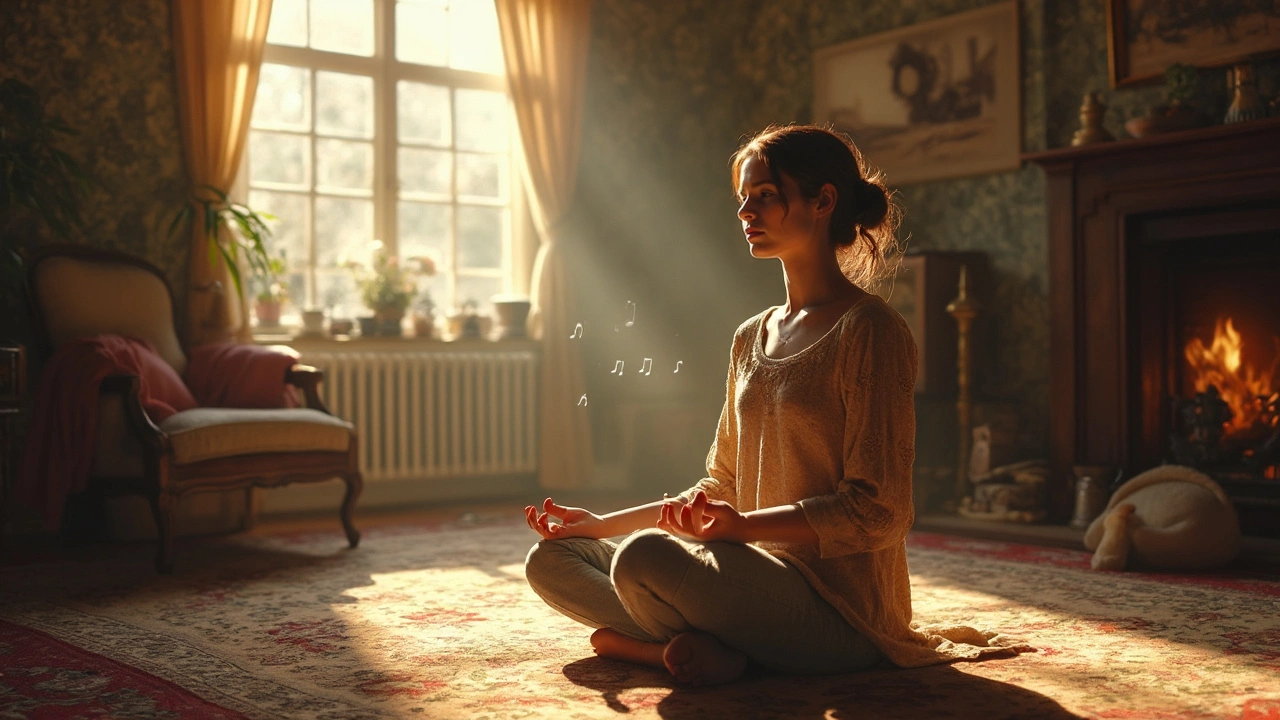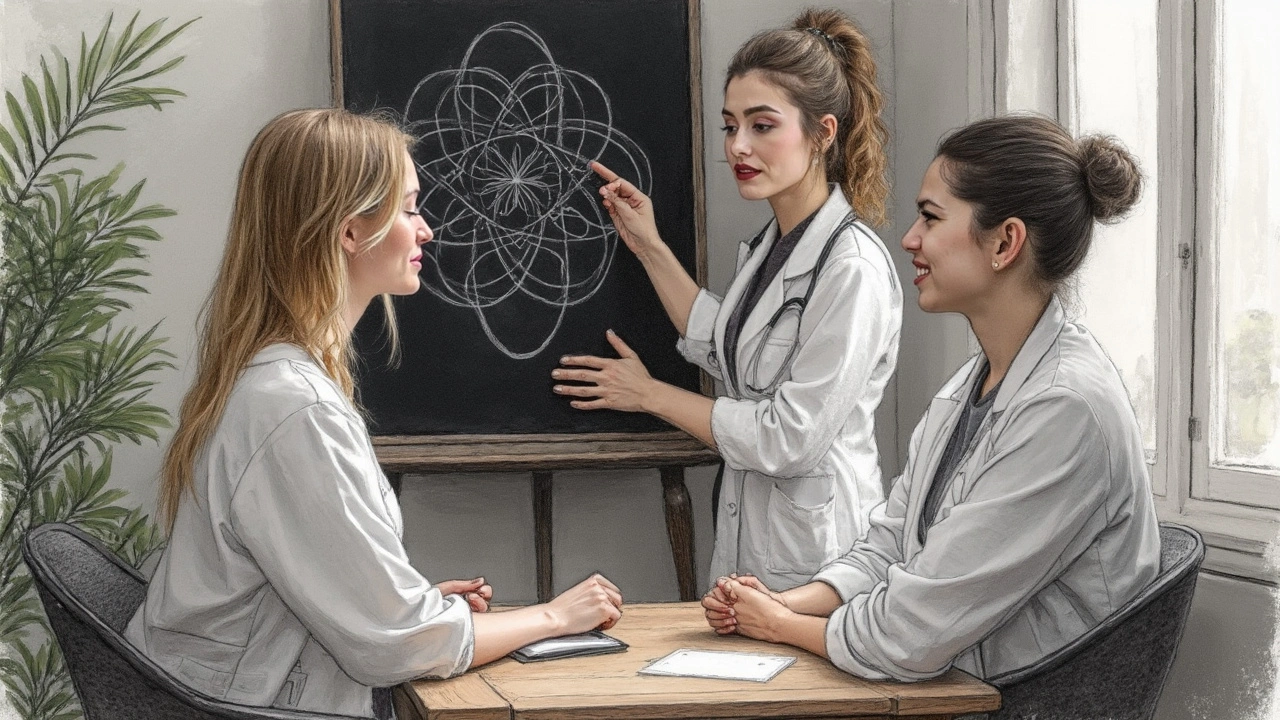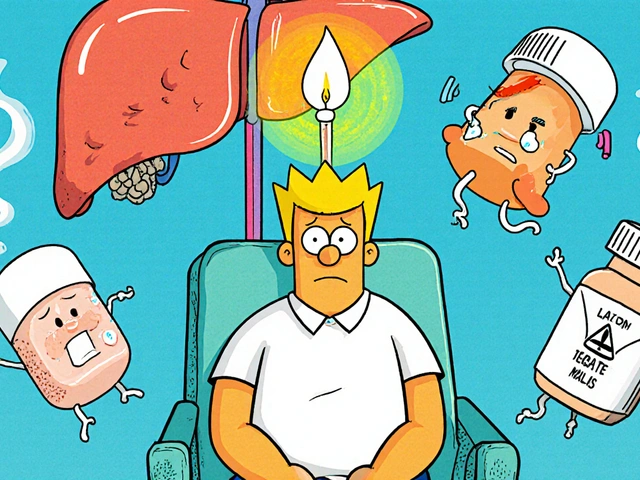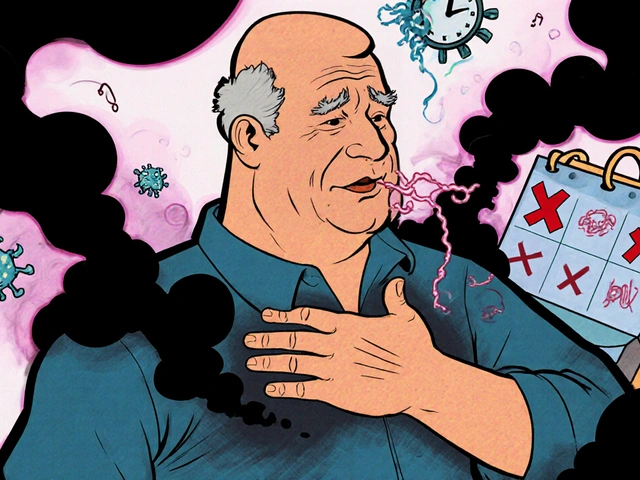Living with Major Depressive Disorder (MDD) is no walk in the park. But what if I told you that incorporating yoga and meditation into your routine might make those tough days a tad easier to handle? Now, I’m not saying it’s a magical cure—it’s more like adding another tool to your toolkit.
You might wonder, how exactly do these ancient practices fit into modern mental health care? Well, for starters, yoga offers more than just flexibility. It’s about connecting your mind and body, which can be incredibly grounding when depression starts to make everything feel a bit disconnected. Plus, the physical activity involved releases endorphins—those handy little chemicals that boost your mood.
On the other hand, meditation might seem simple, maybe even a bit too still for some. But it’s all about training your mind to focus and stay present. For someone with MDD, who might constantly be fighting off a swarm of negative thoughts, this practice can offer a moment of peace.
Curious to find out more? Let’s break it all down, exploring how these practices can be woven into your daily routine and backed up by science. Whether you’re just starting your journey or looking to add something new to your mental health regimen, there's plenty to discover ahead.
- Understanding Major Depressive Disorder
- How Yoga Supports Mental Health
- Meditation Techniques for Depression
- Integrating Practices into Daily Life
- Scientific Backing and Studies
Understanding Major Depressive Disorder
So, what's the scoop on Major Depressive Disorder (MDD)? It's a bit more than just feeling down or having a rough day. MDD is a serious mental health condition that impacts how you feel, think, and handle daily activities. It's characterized by persistent sadness or lack of interest in activities you once enjoyed.
MDD isn't picky—it can affect anyone, regardless of age or background. According to the World Health Organization, depression is the leading cause of disability worldwide, impacting more than 280 million people. For those grappling with MDD, focusing on the basics like eating, sleeping, or even making simple decisions can be challenging.
MDD symptoms can vary from one person to another, but they usually include:
- Persistent sad, anxious, or "empty" mood
- Feelings of hopelessness or pessimism
- Loss of interest or pleasure in hobbies and activities
- Decreased energy or fatigue
- Difficulty sleeping or oversleeping
It might feel like a never-ending tunnel, but believe it or not, there’s a light at the end, with effective ways to manage and treat the condition. It’s crucial to seek professional help if you think you or someone you know might be dealing with MDD.
What’s worth noting is how the treatment landscape is moving beyond just pills and therapy. Yoga and meditation are emerging as complementary practices offering a different ray of hope.
"Depression affects people in different ways, so it’s essential to find a personal path to recovery that may include both conventional and alternative methods," says the National Institute of Mental Health.
The takeaway? While MDD is a challenging condition, understanding it better is the first step toward managing it. It helps to know you’re not alone and that there are proven paths to well-being, blending both traditional treatments and holistic approaches like yoga and meditation.
How Yoga Supports Mental Health
Alright, so let's talk about how yoga can play a pretty nifty role in boosting mental health, especially for those dealing with Major Depressive Disorder (MDD). Most folks think of yoga as just another way to get a good stretch in, but there's a lot more going on beneath the surface.
The Mind-Body Connection
Firstly, yoga is all about harmony between the mind and body. When you're dealing with depression, feeling out of sync with yourself is common. But with yoga, you're learning to listen to your body. The constant movement and breathwork ease tension, both mentally and physically, making you feel more grounded.
Endorphin Rush
You know how people talk about that runner's high? Well, yoga's got something similar. When you engage in yoga, your brain releases these chemicals called endorphins, which are natural mood lifters. It’s like a little dose of happiness that can help brighten your day.
Reducing Stress and Anxiety
Yoga encourages deep and conscious breathing, which can seriously reduce stress and anxiety levels. This type of breathing activates your body's relaxation response and helps quiet the mind. For someone with MDD, calming that constant noise of negativity is a big win.
Community and Support
Joining a yoga class can also mean meeting new people. Being around others who are focused on improving their wellness can encourage you to keep coming back. Plus, having a supportive circle never hurts.
Science Says It Works
Here's something interesting: a study from 2022 showed that individuals who practiced yoga for just two months saw a noticeable reduction in their depression levels. It's a big nod from science supporting the benefits of incorporating yoga into managing major depressive disorder.
So, if you're considering trying out yoga, you're not just signing up for a workout—you're introducing a holistic practice that supports mental health in multiple ways. Remember, it's all about finding what feels good for your unique journey.

Meditation Techniques for Depression
If you're dealing with Major Depressive Disorder, the idea of finding peace through meditation might seem a bit far-fetched. But hang on—there's some compelling evidence to give it a shot. Meditation isn’t about emptying your mind. Instead, it's about finding focus, and being present.
One of the most popular meditation techniques is mindfulness meditation. This involves sitting quietly and focusing on your breath, allowing thoughts to come and go without judgment. You might be surprised at how this simple practice can help center your mind and reduce stress.
Guided Meditation
Not sure where to start? Guided meditation can be a great entry point. It's like having a coach in your ear, walking you through the process. There are loads of apps and online resources that can help. Typically, these sessions involve focusing on breathing, visualizations, or repeating a mantra.
Research even suggests guided meditation can lower cortisol levels—a win when battling depression-related stress.
Breathing Exercises
Breathing deeply not only calms the mind but also the nervous system. Try the 4-7-8 technique: inhale for 4 seconds, hold for 7, then exhale for 8. Repeat a few times and notice the calmness spread. This exercise is free and can be done anywhere—talk about handy!
Body Scan Meditation
This practice is all about tuning into your physical sensations. Starting at your toes, slowly move your attention up through your body, noticing how each part feels. It’s like a self-check-in that can help interrupt a spiral of negative thoughts.
| Technique | Benefit |
|---|---|
| Mindfulness Meditation | Improves focus and reduces stress |
| Guided Meditation | Provides structure, especially useful for beginners |
| Breathing Exercises | Instantly calms the mind and body |
| Body Scan | Increases bodily awareness and interrupts negative cycles |
Meditation isn’t a quick fix, but with regular practice, it becomes another tool to help manage depression symptoms. Start small, a few minutes daily, and build from there. With patience, it can become a cornerstone of your mental health routine.
Integrating Practices into Daily Life
Alright, so you’re curious about how to squeeze some yoga and meditation into your everyday hustle, especially when dealing with Major Depressive Disorder (MDD). The good news? You don’t need an hour a day or a super fancy setup. Let’s dive into some down-to-earth methods that can work for just about anyone.
Start Small and Simple
Don't stress about pulling off a 60-minute yoga session right off the bat. Start with short sessions, maybe 10-15 minutes in the morning or before bed. A couple of straightforward poses like Child’s Pose or Cat-Cow can make a difference. It's not about perfection; it's about showing up for yourself.
Find Your Meditation Groove
If sitting still with your thoughts seems overwhelming, you might need a different approach. Try guided meditations on apps or website platforms to keep it engaging and give you direction. Even five minutes of focused breathing can settle a racing mind.
- Download an app with beginner-friendly meditation guides.
- Set a timer to remind you to take a meditation break—15 minutes tops will do.
- Create a comfortable spot, with dim lighting or a favorite pillow.
Make It a Habit
Turn yoga and meditation into a regular part of your lifestyle. Aim for consistency, trying to practice at the same time each day. This helps you build a routine and gives your body and mind something to look forward to.
Track Your Progress
Jot down notes or keep a journal to track how you feel over time with these practices. Notice any changes in mood or energy levels? It’s motivating to see progress, however small.
| Week | Yoga Sessions Completed | Meditation Duration (minutes) |
|---|---|---|
| Week 1 | 3 | 10 |
| Week 2 | 4 | 15 |
| Week 3 | 5 | 20 |
Remember, the ultimate goal here isn't to hit some arbitrary milestone. It’s about feeling better equipped to handle whatever MDD throws your way. And the best part? You’re doing it through practices that nurture both body and mind.

Scientific Backing and Studies
You might be wondering, "Does this yoga and meditation stuff actually have any scientific juice behind it?" The short answer is yes. Recent studies have started to map out how these practices can support folks dealing with major depressive disorder.
The Yoga Perspective
One neat study from the Journal of Clinical Psychology found that regular yoga practice lowered both anxiety and depressive symptoms. The magic number was about twice a week, which seemed to really boost those feel-good endorphins and cut down on stress hormones, like cortisol.
Researchers even discovered that participants started noticing improvements in their mood after about a month of consistent practice. That's right—just four weeks in, and people were feeling a bit more like themselves.
Meditation in the Mix
On the meditation front, a review published in JAMA Internal Medicine showed that mindfulness meditation helps reduce symptoms of depression, especially when different techniques are combined. Techniques like mindful breathing and awareness exercises were at the top of the study's list.
More importantly, the effects were similar to what you might see with antidepressant medications (minus the side effects), which is pretty high praise for just sitting quietly with your thoughts.
Quick Glance at Some Numbers
| Practice | Weekly Frequency | Time to Notice Benefits |
|---|---|---|
| Yoga | 2 times | 4 weeks |
| Meditation | 3 times | 8 weeks |
These are just a few examples, but they give you a taste of how yoga and meditation are backed by legit research. So, next time someone wonders if you’re just stretching on a mat for fun or




